
Part I: Fundamentals of Science
Reading Modules
Read Chapter 1: pgs. 5-24
LAB Manual SCI 110
Presentations / Lectures
Overview of what to expect in SCI 110,
* Become familiar with different types of lab equipment
* Understand how to properly measure volume and weight in lab.
* Learn the difference between precision and accuracy
* Understand how to calculate % error and uncertainty
* Prepare for our first lab, Lab Equipment and Measurements
Homework
Part II: Physical Systems
Presentations / Lectures
Presentation 3: Matter, Energy and Thermodynamics
* What is Matter?
* What is Density?
* What is Energy? The Types?
* What is Thermodynamics? The Laws?
* Understanding atomic theory and the idea of matter as particles.
* Identifying how pure matter (elements) is classified.
* Learning the difference between the types of matter derived from pure substances.
* Preliminary Introduction to Chemical Naming and Reactions
Presentation 5: Energy and Light
* Understanding the three definitions of light.
* Identifying properties of a wave.
* Being able to classify the different types of light.
* Describe and provide examples of properties of light.
* Introduction to applications in science/everyday life.
Early Ideas About Matter
The Periodic Tables of Elements
Light and Electromagnetism
Waves and Wave Motion
Homework
Additional Readings
The text is grounded in real-world examples to help students grasp fundamental physics concepts. It requires knowledge of algebra and some trigonometry, but not calculus. College Physics includes learning objectives, concept questions, links to labs and simulations, and ample practice opportunities for traditional physics application problems.
Read:
Chapter 15: pgs. 555-574
Chapter 27: 1057-1066
Lab Manual
Part III: The Universe & Early Earth
Presentations / Lectures
* What is the Big Bang Theory (BBT)?
* What is the evidence behind the BBT?
* How do stars and astronomical systems develop?
* How are they classified?
* How do we classify other astronomical bodies such as
asteroids, meteors, and comets?
Presentation 7: Earth and Gravity
* To understand the development of the Earth, its moon and the rest of the planets in the solar system.
* How we postulated these theories and the evidence behind it.
* To understand the law of gravity.
* To explore the mechanical and compositional
layers of the earth.
• Introduction to seismic waves
The Nature of Scientific Knowledge
Homework
LAB Manual for SCI 110
Additional Readings
Part IV: Modern Earth
Lectures / Presentations
* To learn the importance of the atmosphere.
* To distinguish the properties and composition between the different layers of the atmosphere.
* To understand the chemistry and physics of the atmosphere that
causes the observable phenomenon.
Presentation 9: Plate Tectonics
* Understand what Continental Drift Theory is.
* What is the evidence from when first proposed to what we understand today?
* Understand the mechanism behind Volcanoes and Earthquakes.
The study of the solid physical characteristics of Earth.
* Earth’s Structure
* Plate Tectonics
* Minerals
* Rocks
* The Rock Cycle
* Soil
* Topography & Geomorphology
* Understanding the difference between weather and climate.
* Identifying the reason for various weather phenomenon.
* Variables that inherently lead to weather.
* How they influence individual weather conditions.
Composition of the Earth’s Atmosphere
Plate Tectonic Theory
Plate Boundaries and Driving Forces
The Rock Cycle
Defining Minerals
Properties of Minerals
Factors that Control Regional Climate
Factors that Control Earth’s Temperature
Lecture Homework
Part V: Life Origins:
Lectures / Presentations
Presentation 12: Chemistry of Life
• Examining the definition of life.
• Exploring the main components of life through an introduction to organic chemistry and biochemistry.
> The Elements
> The Importance of Water
> Types of Macromolecules
a. Proteins
b. Lipids
c. Carbs
d. Nucleic Acids
• Identifying the main two types of reactions that occur in living things.
* To understand the importance of studying DNA structure and function.
* To identify the details of the processes in the central dogma of biochemistry.
* To Identify errors that may occur in the central dogma or the cell cycle that lead to DNA and protein changes.
* To understand the basics of phylogeny.
Presentation 14: DNA & Phylogeny
* To understand the the importance of studying DNA structure and function.
* To Identify the details of the processes in the central dogma of biochemistry.
* Identifying Errors that may occur in the central dogma or the cell cycle that lead to DNA and protein changes.
* Understanding the basics of phylogeny.
* To understand the difference between of genotype and phenotype.
* To identify and understand the laws and principles surrounding heredity.
* Mendelian Genetics
* Non-Mendelian Genetics.
* Using punnett squares and pedigree charts to determine hereditary information.
* To understand potential theories surrounding the origin of life.
* To understand the theory of evolution.
* To understand and identify taxonomy and comparative anatomy terminologies.
LAB Manual for SCI 110
Homework
Additional Readings
Clark, M. A., Choi, J. H., Douglas, M. M. & OpenStax: College Biology.
Chapter 3; pages 69-96
